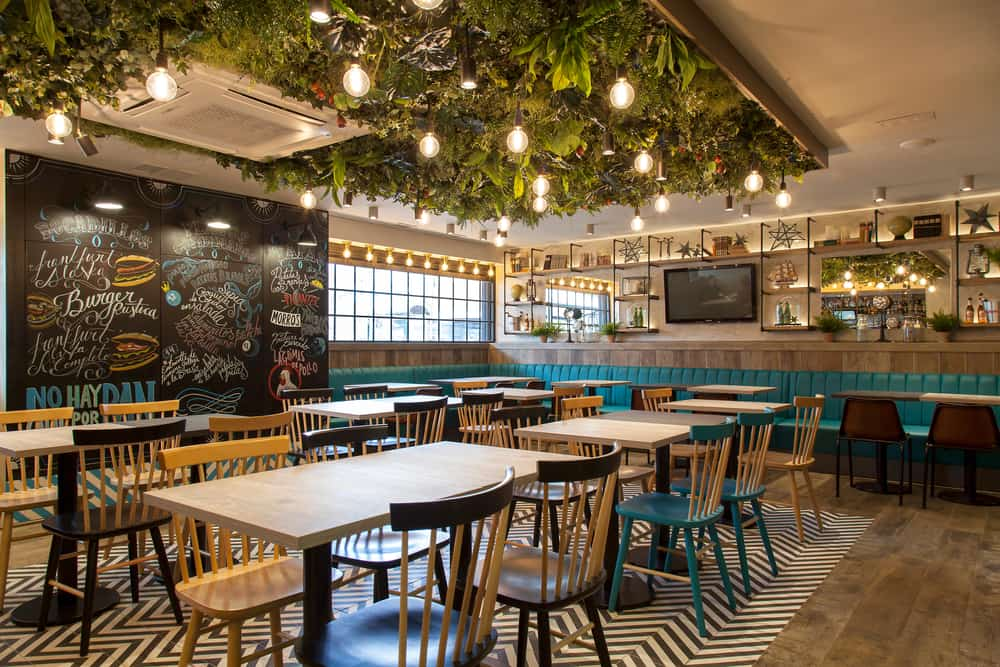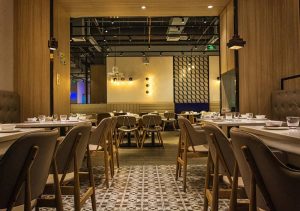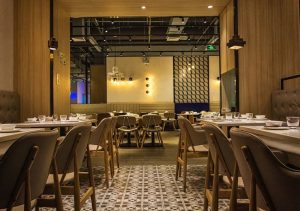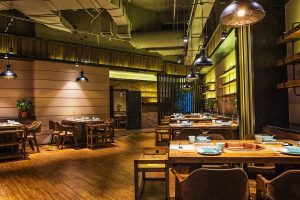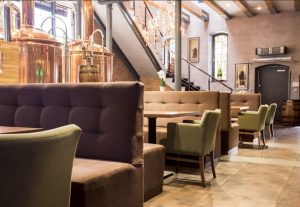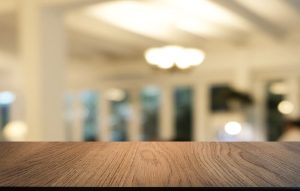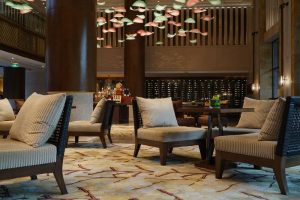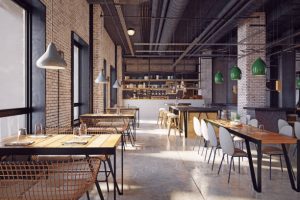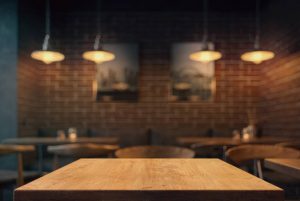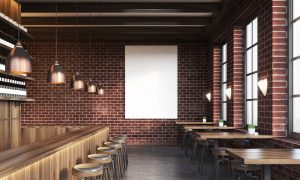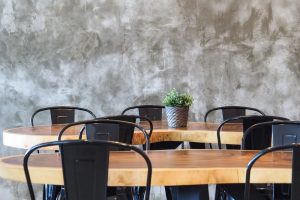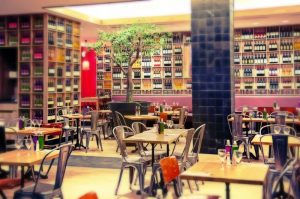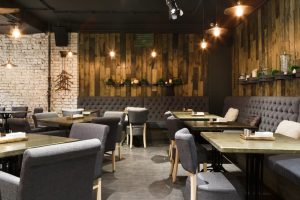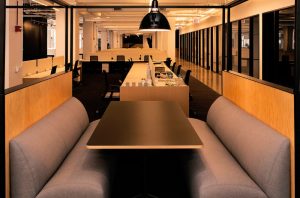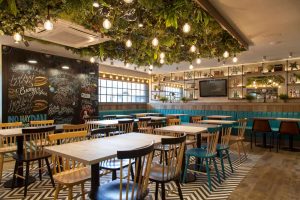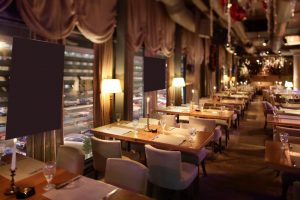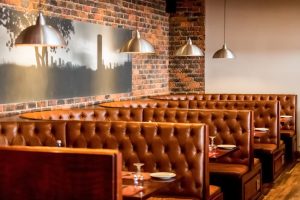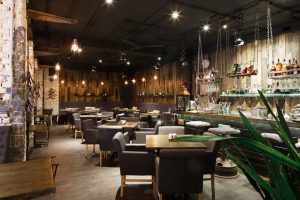When constructing a restaurant, there are numerous factors to take into account, but one of the most crucial is the psychology of restaurant designs. This concept ensures that establishments are crafted to create an immersive experience, engaging diners both visually and psychologically. From lighting and color schemes to seating arrangements and acoustics, every design element plays a role in shaping customer perception, influencing mood, and ultimately enhancing the dining experience.
Restaurants that are productive harness psychology to affect customers’ perceptions and decisions – from interior design to the positioning of menu items.
This piece of article is geared toward providing those psychological designs and harnessing their benefits.
Table of Contents
Toggle- What is the Psychology of Restaurant Design?
- The crucial aspects of restaurant design psychology
- The Psychology of Light and Colour in a Restaurant Design
- Restaurant Furniture Layout
- 4 Tips for Furnishing your Restaurant
- How to Furnish a Restaurant
- How to choose furniture for your restaurant
- What is the role of color in restaurant interior design?
- Most popular wood types for restaurant furniture
- How to choose the right tabletop material
- How to Choose Timeless Furniture for your Hotel
- Turkish Restaurant Furniture Options
- Restaurant Furniture Istanbul
- Restaurant Bar Chair Ideas from Turkey
- Metal or Plastic Chair for your Restaurant in Turkey
- Restaurant Chair Produced in Turkey for Indoor and Outdoor
- Selecting Restaurant Tables Made in Turkey
- Designing Restaurant Booth Seating From Turkey
- 7 Things to Consider Whilst Designing a Restaurant Furniture Layout
- The Guide to Planning and Buying Restaurant Tables and Chairs Made in Turkey
- Advantage of Booth Seating Made in Turkey
- What type of restaurant chair should you prefer – wooden, metal, or plastic?
- Building A Unique Atmosphere
What is the Psychology of Restaurant Design?
The process of setting up external factors to produce a planned and intended setting in a restaurant is known as the psychology of restaurant designs. This concept focuses on creating the ideal equilibrium between various design elements to enhance the overall dining experience for customers.
To provide guests with the greatest and most appropriate dining atmosphere, restaurants can and should be designed in a variety of ways, all while leveraging the psychology of restaurant designs to influence mood, comfort, and customer behavior effectively.
The crucial aspects of restaurant design psychology
When we first contemplate the design of a restaurant, two key items go in tandem for us. The idea and narrative behind the design come first. We must ensure that a compelling viewpoint is maintained throughout the design’s features, making sure that each element serves its purpose without appearing clumsy or redundant. This could be done by setting up restaurant furniture or even getting Turkish restaurant furniture.
The services of the restaurant are the second most significant and crucial component of its design, as well as its most crucial component overall. You should reflect on the following: How do customers enter the restaurant? How is the food brought to the customers’ tables and what path does it travel from the kitchen? How many servers will be providing service in the area?
For the restaurant to be successful and to guarantee that customers have a wonderful time, the organizational arrangement must run as smoothly and easily as feasible for the staff who run it. Every operation must be well thought out – such as getting good Turkish furniture supplies – whether the restaurant is a fine-dining establishment or a more relaxed fast service restaurant, to ensure that it runs like a well-kept machine.
The Psychology of Light and Colour in a Restaurant Design
One of a restaurant’s most important design elements is the lighting, which is also important psychologically. To make customers feel at ease, optimistic, and calm while they are in the restaurant, it must be nice and inviting. To balance the more focused architectural lighting and to account for the time of day, we frequently accomplish this using moderate lighting effects.
In every environment, color undoubtedly has a significant impact on how individuals think and act. In a restaurant, color and lighting virtually totally determine the mood, so they should be appropriate for the cuisine and the intended atmosphere.
Restaurant Furniture Layout
The restaurant furniture layout plays a vital role in customer...
Read More4 Tips for Furnishing your Restaurant
Furnishing a restaurant goes beyond choosing tables and chairs; it...
Read MoreHow to Furnish a Restaurant
Furnishing a restaurant is about more than just selecting tables...
Read MoreHow to choose furniture for your restaurant
When opening or renovating a restaurant, one of the most...
Read MoreWhat is the role of color in restaurant interior design?
The role of color in restaurant interior design is one...
Read MoreMost popular wood types for restaurant furniture
When selecting restaurant furniture, wood remains one of the most...
Read MoreHow to choose the right tabletop material
Choosing the right tabletop material is crucial when selecting furniture...
Read MoreHow to Choose Timeless Furniture for your Hotel
Timeless furniture for your hotel is one of the most...
Read MoreRestaurant Furniture Istanbul
We are operating professionally in the field of restaurant furniture...
Read MoreRestaurant Bar Chair Ideas from Turkey
When designing a restaurant or bar, seating is a crucial...
Read MoreMetal or Plastic Chair for your Restaurant
Metal or Plastic Chair for Your Restaurant: Finding the Right...
Read MoreRestaurant Chair for Indoor and Outdoor
Selecting the right restaurant chair produced in Turkey for indoor...
Read MoreSelecting Restaurant Tables Made in Turkey
If you seek to add finishing touches to your restaurant...
Read MoreDesigning Restaurant Booth Seating From Turkey
If you have procured a restaurant booth seating made in...
Read More7 Things to Consider Whilst Designing a Restaurant Furniture Layout
Getting a good review for your restaurant is not solely...
Read MoreThe Guide to Planning and Buying Restaurant Tables and Chairs Made in Turkey
If you are a potential restaurant owner, planning and buying...
Read MoreAdvantage of Booth Seating Made in Turkey
It is no gainsaying that Turkish-made Booths are taking center...
Read MoreWhat type of restaurant chair should you prefer – wooden, metal, or plastic?
Immediately a guest steps into your hospitality outlet, your furnishings...
Read MoreBuilding A Unique Atmosphere
Today dining has become fashionable so customers expect to have...
Read More

